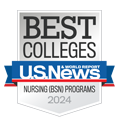Pride Month News and Resources
Pride Month is celebrated every June in tribute to those involved in the Stonewall Riots. In honor of LGBTQ+ History and Pride Month, take a few moments to explore resources and learn about the LGBTQ+ community at U-M and the School of Nursing.
Read about the history of U-M's Spectrum Center. Explore Spectrum's website to learn how to connect with the LGBTQ+ community on campus, including LGBTQ+ organizations and advocacy efforts on campus. Be sure to also read Spectrum's Statement of Solidarity with Black and Asian Communities. This resource is useful if you need more support around you now.
The U-M School of Nursing has many resources, including an LGBTQ+ Faculty Network group led by Dr. Akshay Sharma. The purpose of this group is to disseminate information pertaining to LGBTQ+ issues and serve as a resource to individuals who might be feeling marginalized on account of any aspect of their identity. To connect with Dr. Sharma, please email [email protected].
Also, be sure to check out the Center for Sexuality and Health Disparities (CSHD) at the U-M School of Nursing, directed by Dr. Rob Stephenson. The CSHD team manages numerous studies focusing on improving health outcomes for the LGBTQ+ community. Take a few moments to learn about their research projects, publications and team members. Browse the resources page on the center’s website to find information on local and national LGBTQ+ resources and organizations. You can link to the center's social media from here and sign-up for updates and the CSHD newsletter. To connect with the center, please email [email protected].
A series of videos were produced by U-M to honor the work of notable LGBTQ+ history-makers like Laverne Cox, Tammy Baldwin and Christine Jorgensen. These and many other DEI videos can be accessed here.
LGBTQ+ organizations across the country are developing Pride Month activities that align with work for racial justice. This work amplifies the voices of people of color within the LGBTQ+ community and also outside of it. It's a great example of how communities work together for change, while guided centrally by the courage, honesty, insight and voices of those who live at the intersection of multiple historically marginalized identities.





